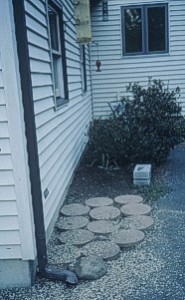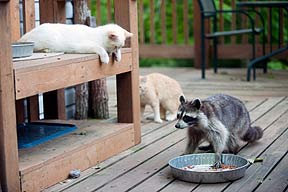Minnesota Wild Animal Removal & Prevention
There was a time – only about a generation ago – when catching a fleeting glance of a white-tailed deer bounding across a meadow would have been rare indeed; when spotting a bear in your backyard happened only once in a blue moon. But these days… not so much! As human development spreads, wildlife conflicts happen more frequently.
 Minnesota is home to many kinds of wildlife. Some of these critters might be delightful to have as outdoor visitors (bats, chipmunks, even squirrels), but you’ll probably want to discourage them from settling in your home.
Minnesota is home to many kinds of wildlife. Some of these critters might be delightful to have as outdoor visitors (bats, chipmunks, even squirrels), but you’ll probably want to discourage them from settling in your home.
Their presence can be a source of enjoyment or sheer aggravation. The difference often depends on taking a few simple steps to avoid problems. After all, preventing wildlife problems is a lot more effective, less expensive and friendlier than waiting for a bump in the night.
Most wild animals just mind their own businesses and never cause a conflict with people. In fact, many people deeply enjoy their interactions with wildlife. Often, species are not viewed as pests in their normal habitats but may clash with people when they enter our world. How many people worry about a skunk in the woods? Yet a skunk under the front porch is an entirely different matter.
Most wildlife conflicts can be explained with three words: food, water and shelter, especially safe places to raise their young. Provide them intentionally or accidentally, and most wild animals will gladly accept the invitation to just hang out or loaf.
Even these critters recognize a good deal when they see it and learn to take advantage of the riches we provide. What better place to spend the winter than under the porch or in the eaves/attic of your house?
 When people intentionally (or unintentionally) feed wildlife, they can cause or worsen other problems. Spilled bird seed, pet food left in dishes outdoors, and garbage can become a midnight buffets for a variety of wildlife from mice, rodents, bears, foxes, raccoons, to skunks.
When people intentionally (or unintentionally) feed wildlife, they can cause or worsen other problems. Spilled bird seed, pet food left in dishes outdoors, and garbage can become a midnight buffets for a variety of wildlife from mice, rodents, bears, foxes, raccoons, to skunks.
If you can remove these temptations, or change them so they’re not as appealing as they were before, you may be able to solve the problem for good. And you can reduce your risks of structural damage, home invasion and a host of other problems. This approach is known as “habitat modification.” Although it’s sometimes more expensive up front, the long-term payoff is usually good because this gets at the root of the problem. Sure, you can just trap and remove an animal. Year after year after year… that adds up.
Wild Animal Management
Habitat management is the key to reducing damage from all of these critters. The best habitat management includes elimination of food sources and hiding places. The supply of naturally occurring foods such as seeds, nuts, and insects will vary depending on circumstances such as wind, rain and temperature patterns. However, homeowners have control over such foods as birdseed, animal feeds, etc. These sources, bird and pet feeders, are often the means for inviting wildlife too close to our homes. Trash cans, dog food dishes, etc. left outside supply additional habitat. Always store seeds or animal feeds in hard containers (metal or glass).
Wild Animal Removal MN
Homeowners should not attempt to remove an intruding critter from their home or property on their own. Although they may appear cute and cuddly, these pests can display erratic behavior and can bite, peck or claw if they feel threatened. Instead, contact a Minnesota Wild Animal Removal Expert or Pest Control professional to handle the problem.






